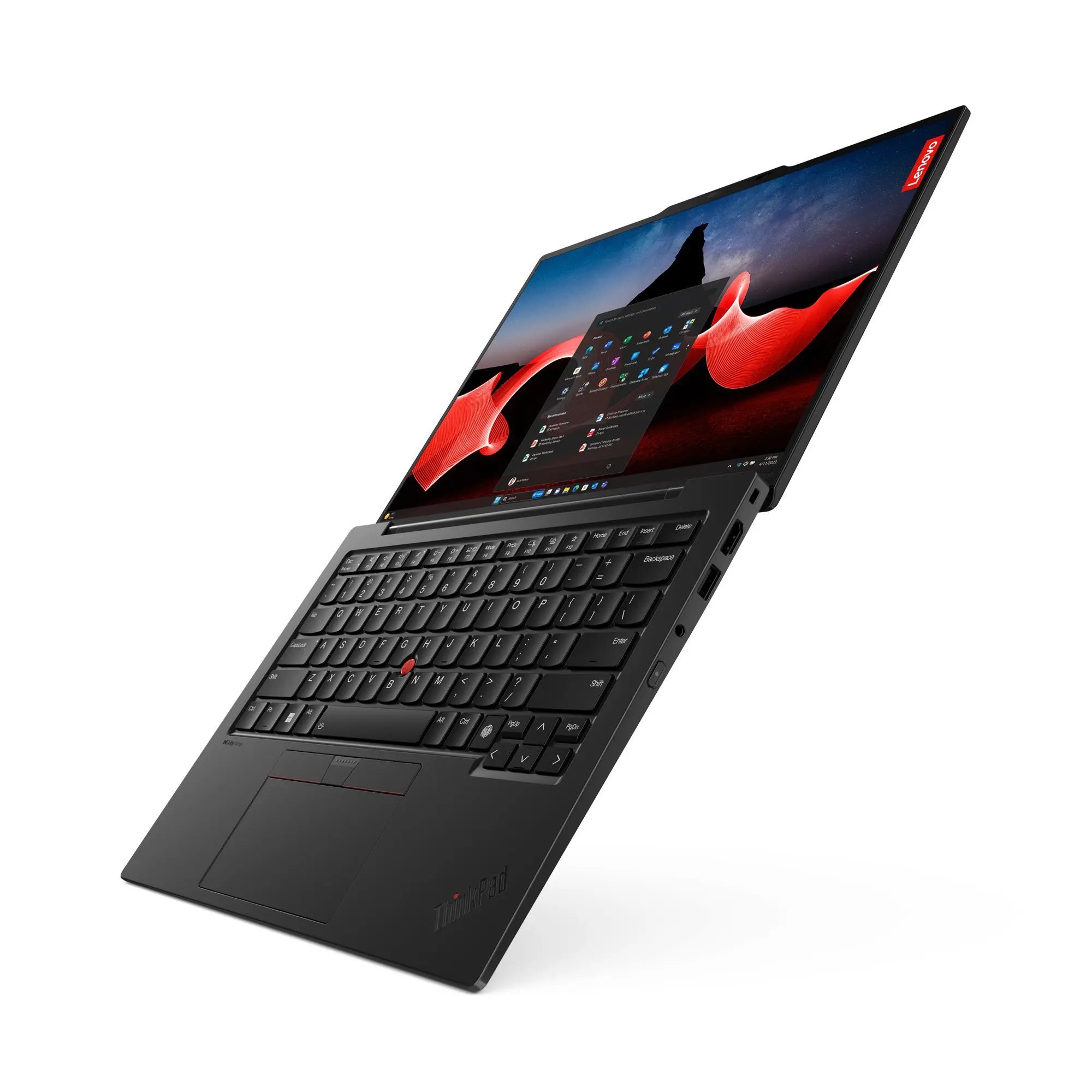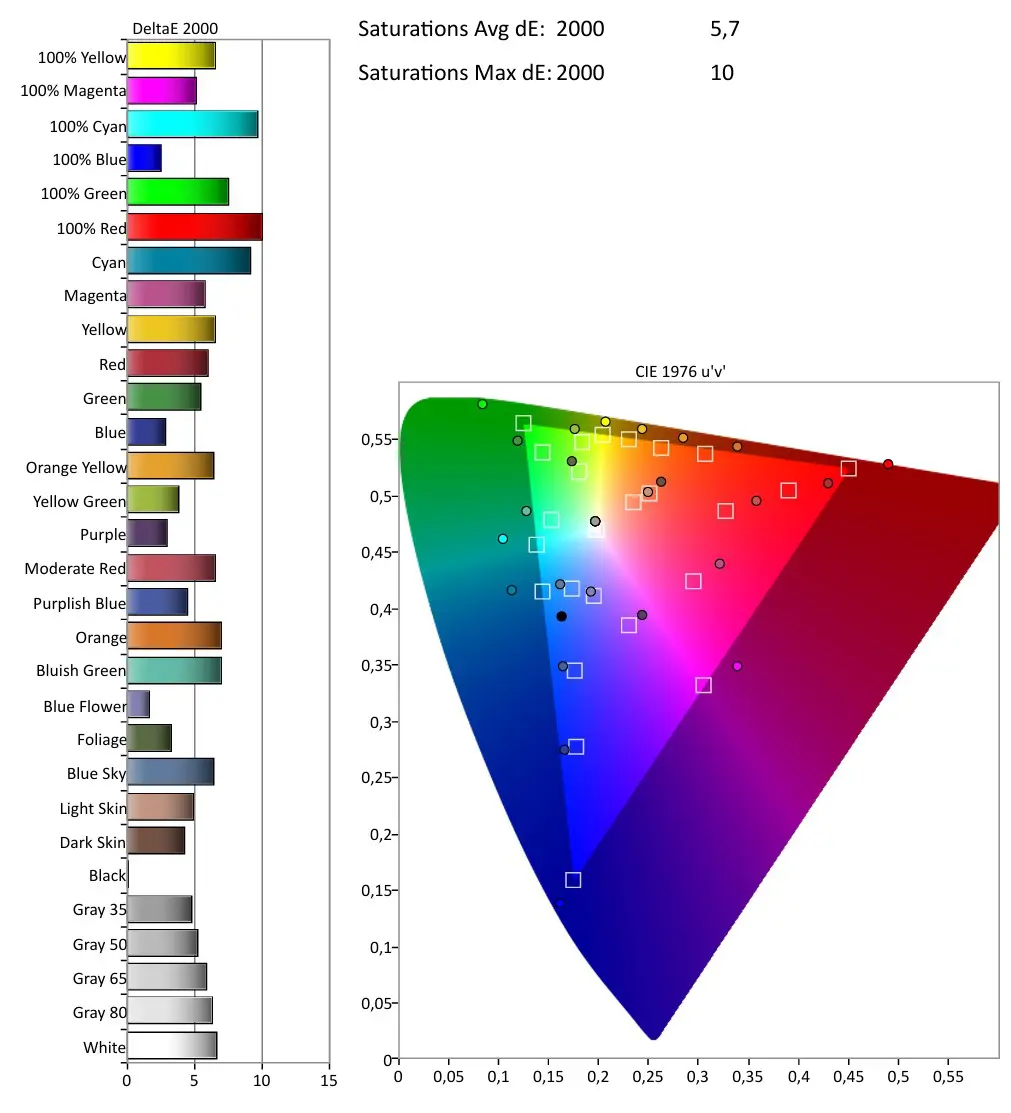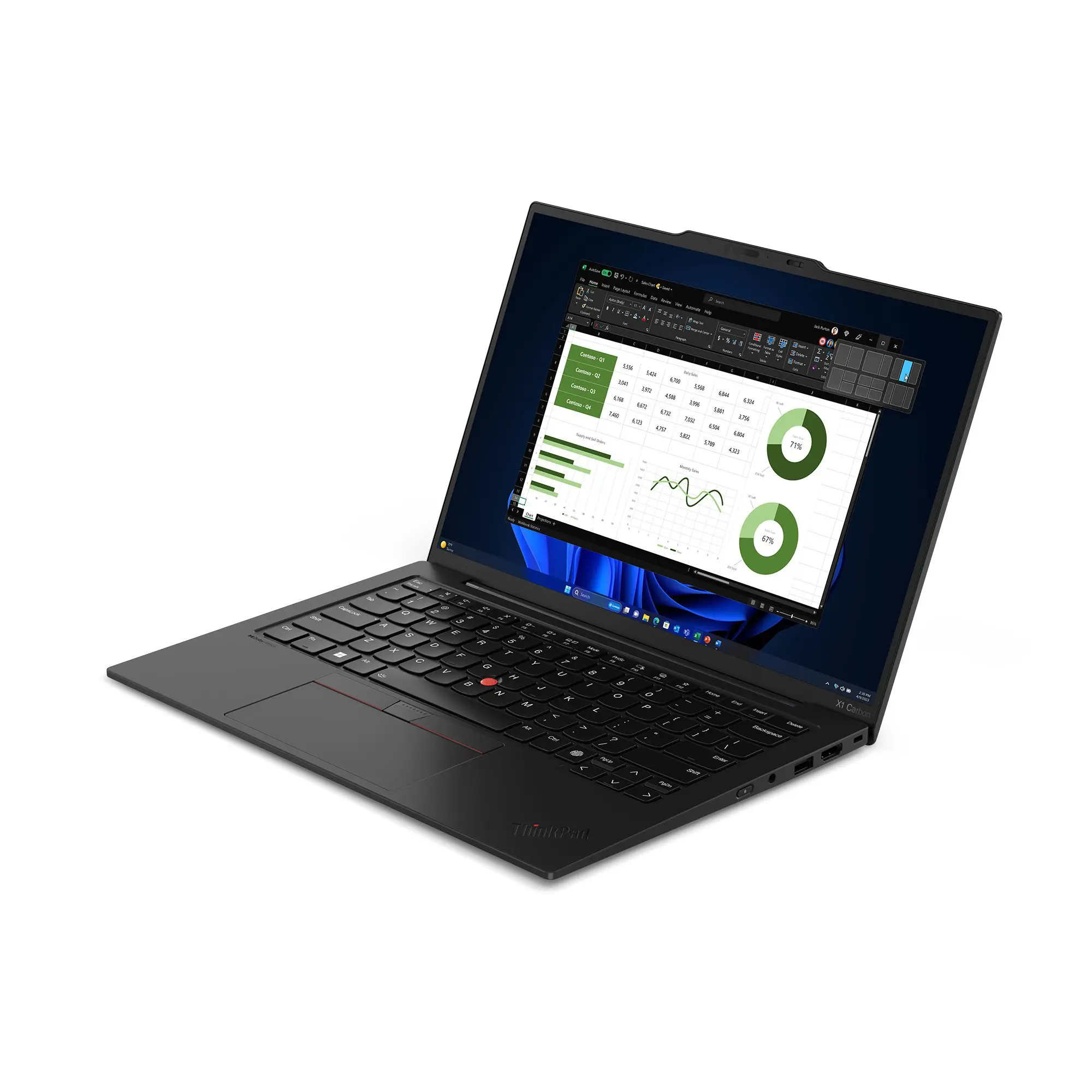The latest version of the Lenovo X1 Carbon is still a decent laptop. Only, Intel has let Lenovo down: the CPU of the Lenovo ThinkPad X1 Carbon Gen 12 has neither enough horsepower nor enough endurance to make this device a good choice.
The Lenovo ThinkPad X1 Carbon is, on paper, Lenovo’s ultimate laptop. For twelve generations, the laptop maker has been building sleek, slim and high-performance devices under this moniker. This latest edition is no different. Were laptops still by definition to have x86 chips on board, we would once again crown the Lenovo X1 Carbon Gen 12. However, the reality is different: the device does everything quite well, but even within Lenovo’s own ThinkPad range there are more interesting alternatives.
Sublime keyboard
Lenovo is doing a lot of things right. The X1 is another very recognizable device, manufactured in a black (but fingerprint-sensitive) case. The keyboard is simply the best you can buy on a laptop today. It seems even better than in previous generations, and the touchpad plays along at the same level. The power button is somewhat awkwardly hidden on the side, but that in itself is not a disaster.

There is no shortage of ports: two USB Type-C (Thunderbolt) ports adorn the chassis on the left side. On either side, we find one USB A port. That choice is a bit odd: the USB-C ports serve to connect a dock or display, so would be better located mirrored, while the placement of the USB-A ports is less important. We write it off as a beauty flaw. Lenovo still finds room for a headphone jack and an HDMI port.
Intel disappoints
Everything looks familiar, robust and finished, and yet we don’t get hot on this laptop. The blame for that lies entirely with Intel. The Intel Core Ultra 7 165U vPro is simply not good enough to compete with other CPUs and devices on the market today. Thus, the biggest competition for the Lenovo X1 Carbon Gen 12 comes from Lenovo’s own stable: the ThinkPad T14s.
read also
Lenovo ThinkPad T14s Gen 6 Snapdragon review: the best of both worlds
That device has a similar casing, weighs about the same (1,113 grams for the X1, versus 1,198 grams for the T14s), but costs a lot less (2,378 euros for the X1 versus 1,883 euros for the T14s, each excluding VAT). Still, the ThinkPad T14s Gen 6 is the better device.
Performance
This becomes immediately clear when comparing CPU performance in Geekbench. The Intel Core Ultra 7 165U vPro is not that Ultra at all. In the ThinkPad T14s we find the lightest Qualcomm Snapdragon X Elite in the range, and it is faster than Intel’s chip on all surfaces.

That’s an Intel problem, not a Lenovo problem. Even the Core Ultra 9 185H in Huawei’s MateBook X Pro can’t match the Snapdragon, and neither can the Intel Core Ultra 7 155H. Those Intel chips have a significantly higher TDP and should be powerhouses.

We see the modest performance of the Core Ultra 7 in the Lenovo X1 Carbon Gen 12 not only in artificial tests. Even for more realistic office workloads, this laptop does not perform as well as its competitors. Memory won’t be an issue: the X1 and the T14s both come with 32 GB of RAM.
Not so economical
Intel pulls the card of economy with the CPU. Of the twelve compute cores in the processor, only two are performance cores. Eight are ordinary efficiency cores, and another two compute cores are built for low-power efficiency. That doesn’t buy Lenovo and Intel anything.

The ThinkPad T14s has a battery about the same size but lasts nearly three times longer on a single charge. The other Intel laptops cannot keep up with the ARM device either, despite their larger battery.

Charging does go just as fast, and that shouldn’t be surprising. After all, the CPU plays no role in that test.
We can see that Intel has tried to build an economical and powerful processor tailored for premium mobile laptops like the Lenovo ThinkPad X1 Carbon Gen 12. Unfortunately, it did not succeed: compared to Qualcomm Snapdragon X Elite chips, the Intel CPU is both slower and less economical. That makes the ThinkPad X1 Carbon a lesser device than the ThinkPad T14s.
Lots of pixels, wrong colors
Lenovo does put some fine benefits into the X1 Carbon that somewhat justify the extra price. The 14-inch OLED screen, for example, has a resolution of 2,880 x 1,800 pixels and is nicer and sharper than that of the other laptops in this comparison. That said, it is insufficiently colorfast for graphics professionals. We see large discrepancies across the spectrum, with very solid excesses at the red and blue tones.

As such, we don’t consider color discrepancies for an office laptop a disaster. The fact that the red is a bit lighter or darker than it should be will not bother many people. In this case, however, the deviations are unfortunately very large: photos you view on this laptop will look visibly different on other devices. This immediately cuts into the added value of the OLED screen, which, thanks to such a high resolution, also eats up power and reduces battery performance.
Image and sound
Lenovo equips the Lenovo ThinkPad X1 Carbon with an above-average webcam. That one gets a resolution of 2,160p. The results are good, but not perfect. When there is a light source behind us, it shines out a bit with the effect of a somewhat dirty lens. The camera is definitely better and sharper than those in budget phones, but we already saw better in this price range.
Then again, the sound is top notch. We sound direct and clear, without the fishbowl effect typical of built-in laptop microphones. If we place ourselves next to the speaker through which the radio blares, the other party hears nothing.
Not so impressive
All in all, we are left with a contradiction: the Lenovo ThinkPad X1 Carbon Gen 12 is both a very good laptop, and a disappointment. The twelfth generation of this device, gets a little lost in the offerings. The arrival of Qualcomm and the mediocrity of this generation of Intel CPUs makes this device have to underperform the competition. Add to that some of Lenovo’s beauty flaws, such as the anomalous OLED screen, and you get the least good ThinkPad X1 Carbon in years.

Were the laptop to exist in a vacuum, and 2024 not marked by the launch of ARM laptops, we would rate this device higher. Unfortunately, with the X1 Carbon, Lenovo is just targeting profiles that demand lightweight, portable, premium office laptops. The ThinkPad T14s meets those requirements much better.
However, ARM struggles with one very big drawback: not all applications run on the architecture. Older software, especially applications involving drivers, do not always play along with ARM. If you work with such software, then you do have to choose x86. In that case, the Lenovo ThinkPad X1 Carbon links again as an option.
Lenovo must ask itself a question for the future: should Carbon X1 still be the flag bearer of the laptop portfolio? And if so, should it partner with Intel? If the next generation of Intel CPUs is not more competitive, Lenovo would do better to release Carbon in an ARM flavor.
Tested configuration: Lenovo X1 Carbon Gen 12 21KC-006EMB, Intel Core Ultra 7 165U vPro, 32 GB RAM, 1 TBSSD, 14-inch OLED screen (1,880 x 1,800 pixels), Windows 11 Pro – $2,378 excl.
.pro’s
- Build quality and low weight
- Best laptop keyboard in the market today
.contra’s
- Moderate performance
- Not too good autonomy
- Poorly calibrated screen
